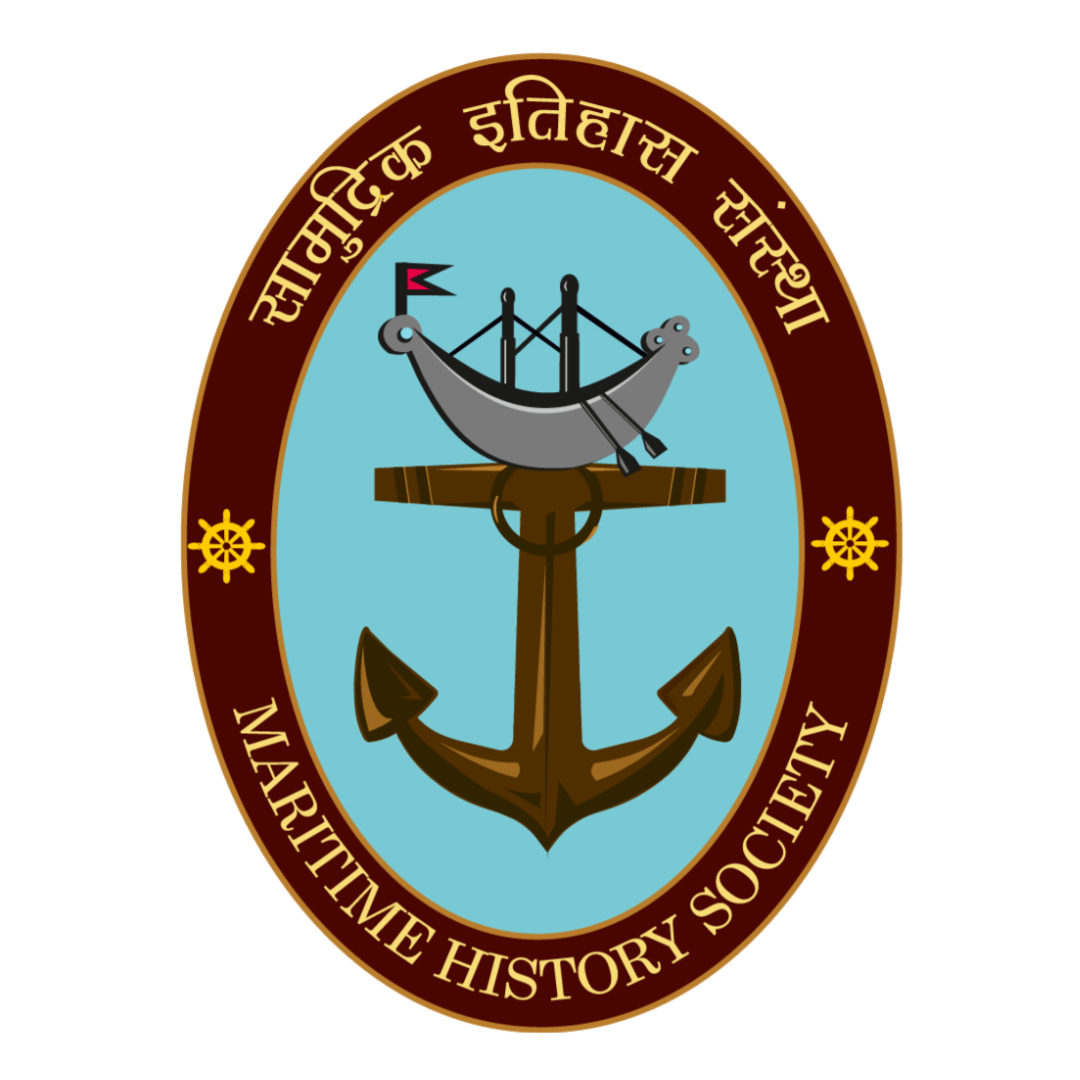According to the Cambridge dictionary, the term ‘iconography’ refers to the use of images and symbols to represent ideas or the particular images and symbols used by a religious or political group. In simple words, iconography is concerned with the visual aspect of the study in regard to ideas, cultures, and the study of these. Iconography is considered as an important aspect as it makes use of various symbols, themes, and subject matter to convey meaning of the work.[1]
The iconography of maritime machinery traces the development of the apparatus that facilitated maritime activities, in this case, since ancient times. The range of ships used for navigation and other activities in the early period is demonstrated by the representation of various types of ships on coins, paintings, sculptures, stamps, and sealing.
Chronologically, the history of Indian maritime activities can be traced back to the Bronze Age Civilization of the Indus Valley which yields archaeological artefacts indicating the mechanisation of maritime activities. These include trade with the Mesopotamian civilization, Oman, China, Iran, Afghanistan, and many more. The Indian site of Lothal is an Indus Valley Civilization site which was a tidal dock possibly used as a trading unit. Many clay model boats have been found on the site of Lothal.[2]
Excavations have also revealed terracotta toy boats in many sites of the Indus civilization. Further, there is also a moulded tablet from Mohenjo-Daro on which one side shows a flat-bottomed boat with a central hut that has leafy fronds at the top of two poles; two birds sit on the deck and a large double rudder extends from the rear of the boat. The other side has a snout-nosed gharial with a fish in its mouth while the third side has eight symbols from the Indus script.[3]
A cave sculpture from the Kanheri caves depicts a shipwreck where two men are praying to Lord Padmapani. This sculpture was possibly the earliest depiction of a maritime voyage through a sculpture. The painting in Cave number 2 of Ajanta caves, Maharashtra depicts a boat whose illustration was produced by the surveyor James Burgess.[4] Among the Ajanta caves is another artwork depicting Vijaya Simha’s arrival in Ceylon (543 BCE) with numerous ships.
The artifacts found at the excavation site of Pattanam, Ernakulam “indicate that Pattanam, with a hinterland port and a multicultural settlement, may have had contacts with the Mediterranean, Red Sea, Arabian Sea, and South China Sea coastlines since the Early Historic Period of South India.” To ascertain the age of these artifacts, the Kerala Council for Historical Research has been having charcoal samples tested using C-14 and other cutting-edge techniques. With the use of scientific methodology, it was revealed that these items were produced during the Iron Age in the historic timeline. In addition to it, the archaeologists found some wooden canoe pieces and bollards (stakes used to anchor canoes and vessels) in a wet region of the site.[5]
An instance of maritime influence on iconography is also depicted on a lead coin of Vasisthiputra Sri that portrays an ancient Indian ship emphasizing the Satavahana Empire’s maritime, trade, and naval might in the first and second centuries CE.
Boats are shown in sculptures on five temples in Tamil Nadu; mostly on the walls and pillars. A panel on the exterior wall of the Sri Vardharaja Perumal temple at Thirubhuvanai, close to Puducherry, shows a boat with an elevated and upturned prow and an arched stern that is higher than the prow. Pullamangai temple features carvings of Rama, Sita, Lakshmana, and their boatman Guha crossing the Ganges as part of the panels that run around the temple, re-enacting the famous river crossing scene from the epic Ramayana.[6]
The Roman historian Pliny noted the peculiar navigational techniques used by Indian ships in the first century AD – “they keep birds on board with them and at fairly frequent intervals set them free and follow the course they take as they make towards the land.” Another depiction of a unique style of ship used in trade between India and East Asia comes from the Buddhist Stupa at Borobudur.[7]
There are many such representations that help us understand the manoeuvres of the early people in regard to exploring and applying the knowledge of the waters and the ways to use these as per their convenience and need. Apart from the iconographic sources, there are innumerable literary sources like the Rig Veda, the Arthashastra, Vanijja Jataka, legends, and stories that render the military and political phase of the maritime narrative of ancient India.
Endnotes:
[1] Definition of iconography from the Cambridge Advanced Learner’s Dictionary and Thesaurus © Cambridge University Press accessed and retrieved through https://dictionary.cambridge.org/dictionary/english/iconography
[2] Tripathi, S. (2017), HISTORICAL NOTES: Early Users of Monsoon Winds for Navigation, Maritime Archaeology of the Indian Ocean
[3] Kenyoer, Johnathan Mark, (https://www.harappa.com/slide/moulded-tablet-mohenjo-daro )
[4] Burgess, James (1878), Ajanta: Boat from right wall of Cave II, Pen and Ink on Paper, British Library. Accessed and retrieved through http://www.bl.uk/onlinegallery/onlineex/apac/other/019wdz000002213u00025000.html
[5] Kamlesh Kapoor (2010), Portraits of a Nation: History of India
[6] Rao, Hemachandra D, ‘Indian Antiquity – Boats and Ships in Sculptures’
[7] Dames, Mansel Longworth (1921), The Book of Duarte Barbosa Vol. II



0 Comments